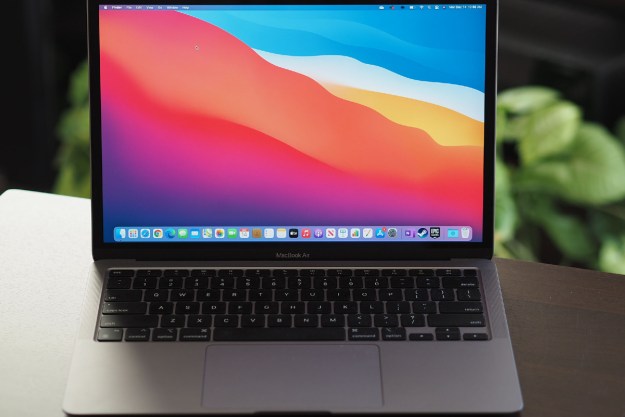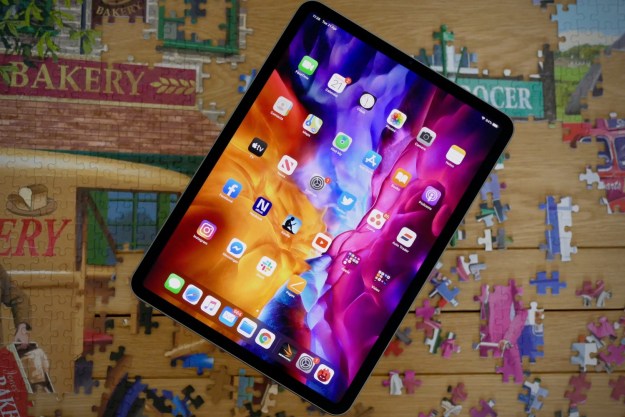Few companies have been as integral to bringing the future to computing for as long as Intel. Now Intel is putting its chips where the films are, acting as a sort of “tech whisperer” to help filmmakers create in virtual reality. Does that mean Intel, and other companies that power VR films, are becoming de facto movie studios?
Helping moviemakers achieve their look is nothing new to Intel. The company provided processing technology to Dreamworks Animation in 2008, for instance. If you thought 2009’s Monsters vs. Aliens looked cool, you can thank Intel.
At this year’s South by South West (SXSW) festival, Intel helped with the world premiere of Eliza McNitt’s virtual reality film Fistful of Stars, a VR exploration into the life and death of a star from the view of the Intel-powered Hubble telescope. Digital Trends spoke with McNitt and Frank Soqui, head of the Intel Virtual Reality Center of Excellence, about how the chipmaker meticulously helped put the film together.
Intel, the VR film consultant
If you ask Soqui how Intel views its role in the VR filmmaking process, he’ll tell you the company considers itself a “technology advisor.” But, as soon as he starts explaining how Intel helps, it becomes clear the chipmaker’s role is far more extensive than simply giving advice. Before any filming begins Intel provides “guidance on the technology, what the CPU can do, and what we can do in software to create a better experience,” Soqui said.
Then the cameras start rolling, and Intel is there to help, literally, bring it all together. “You film for VR, but then you have to stitch that together,” Soqui told us. “There are pre-production aspects in terms of captures, and post-production aspects in terms of how does that film gets made so that it is interactive.” All of that requires high performance computing provided by back-end servers and engineers who know how to use them — both of which Intel has in abundance.
And that’s not the extent of a technology advisor’s role; the Intel rabbit hole goes deeper. “Then you are producing the film, and it becomes a consumption thing. That consumption thing can land on multiple platforms,” Soqui said. “The idea is that it scales to the performance of the consumption device.”
It’s more to enable [filmmakers] than to pay for movie content.
Intel makes sure filmmakers have the equipment to film in VR, sometimes helps piece films together, and optimizes distribution strategies. That sounds a lot like what a movie studio does, short of paying for the film itself. “It’s more to enable [filmmakers] than to pay for movie content,” according to Soqui.
Fistful of Stars director Eliza McNitt told Digital Trends that Intel played a pivotal role in the film’s creation by acting like a movie studio, providing servers to produce the film, computers for McNitt to view the film on the Oculus Rift, and helping her preview it at this year’s CES. “This is not something that could have existed many years ago,” McNitt said. “As an independent creator, Intel has empowered artists like myself who don’t work for a major Hollywood studio to be able to create this kind of an experience, completely on our own.”
McNitt’s Fistful of Stars will be released in June through Viceland’s Beyond the Frame series for the Samsung Gear VR, before it is released on all VR platforms later.
Mixed Reality Films
For McNitt’s Fistful of Stars experience at SXSW, Intel provided Positron Voyager VR seats, the world’s first seats made for cinematic virtual reality. They vibrate, tilt, and give haptic feedback based on what you are viewing in virtual reality. And believe it or not, that is only the beginning of Intel’s ambitions to mix real life with the virtual.
“Let’s say something was rushing at you and you wanted to block it with your hands; all you want to do is hold your hand up,” Soqui said. “Because the [RealSense] camera can detect depth in my hand, the movie would respond to the fact I put my hand up and block something.”

That is thanks to Intel’s RealSense technology, which consists of 3D imaging, depth perception, interior mapping, and feature tracking. The company put two cameras with RealSense into its prototype headset, Project Alloy, to demonstrate mixed reality possibilities at this year’s CES. There, it showed how users might interact with VR objects in real time, and how the headset can turn a real space into a virtual play area.
McNitt and Intel are working on an upcoming episodic virtual reality experience that explores the future of the human race among the stars. “There is a multiplayer social component in one of the episodes, and I want the RealSense camera as a way to incorporate viewers into the experience,” McNitt said. Us earthlings may be able to play with stars in a virtual reality movie as early as 2018, when the episodic VR experience is slated to be released.
Soqui says this type of technology will be prevalent in movies “when filmmakers start to add more interactivity other than viewing to their films.” Filmmakers have been working towards that with programs such as Microsoft’s Actiongram, which lets filmmakers insert augmented holographic characters and effects into real life footage using Microsoft’s Hololens headset. Such films are visually impressive, with holographic astronauts exploring a real-life bathroom and actors talking with unicorns. But none of those mixed reality films let the viewer manipulate what goes on.
Even Intel has underwhelmed in that regard.
No Headset? No Problem
As virtual reality, and specifically VR films, become more complex and interactive, we are going to need better HMD’s to enjoy them. Intel’s Project Alloy prototype headset was showcased recently to demonstrate features the future of VR headsets could possess. Alloy is a headset that has all the tracking sensors, cameras, computing power, and content you would need, without wires connected to an external device. It’s intriguing, but it still has a long way to go.
One of the primary features Project Alloy was meant to display was the headset being able to track someone’s movements in virtual reality without having to set up external sensors. When we tested Project Alloy at CES in January, however, the tracking didn’t work as well as it should, and we repeatedly bumped into real world objects not represented in the VR realm. The Oculus wireless headset prototype we tested last October was noticeably better at tracking. Intel welcomes the competition, because to the chipmaker, Alloy is more of a proof-of-concept than a marketable product.
“Why would we enter the [virtual reality headset] market when our customers are doing these things, and we’re enabling them,” Soqui questioned. “I’m not there to compete with my customer.” Soqui then mentioned Intel’s “long history of showing people what it takes to innovate in these various, evolving form factors” including ultrabook designs. Alloy existing is not indicative of Intel’s intention of making a headset. It is just indicative of what Intel wants other companies to make.
Intel is in the business of pushing VR technology forward beyond just films. It is using its WiGig chips to help HTC make its Vive wireless. It is planning to have its Alloy headset on sale — manufactured by as-of-yet unnamed Intel partners — by the end of the year.
Intel may not be funding the next wave of virtual reality films, or even making the headsets you will watch them on. But the company powering some of the greatest 3D animated films ever made will likely be in the center of the VR film revolution. It will power the machines that innovate the industry, and make sure the filmmakers using it know what they are doing.
In the land of VR films, companies like Intel are the new movie studios.




